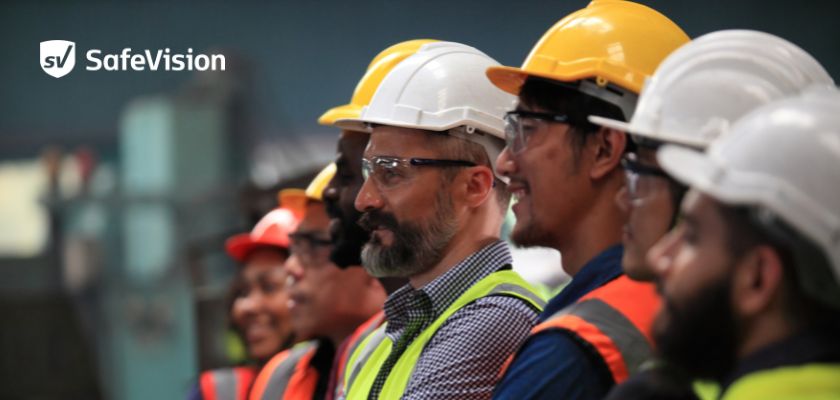Employee, Employer, Safety Glasses
Is Your Employer Required To Provide Prescription Safety Eyewear?
When working in hazardous environments, proper eye protection is essential. While non-prescription safety glasses are often provided by employers, workers who require corrective lenses may wonder: Is my employer legally required to provide prescription safety eyewear?
The short answer: It depends on the job, the hazards, and the eyewear being used. Below we break down the legal requirements and common practices related to employer responsibility and prescription safety glasses.
OSHA REQUIREMENTS FOR EYE PROTECTION
The Occupational Safety and Health Administration (OSHA) sets workplace safety standards in the U.S., including regulations for eye and face protection under 29 CFR 1910.133. According to OSHA:
“The employer shall ensure that each affected employee uses appropriate eye or face protection when exposed to eye or face hazards from flying particles, molten metal, liquid chemicals, acids or caustic liquids, chemical gases or vapors, or potentially injurious light radiation.”
This means employers must provide suitable eye protection for employees when such hazards are present. However, OSHA does not specifically require employers to provide prescription safety eyewear in all situations.
WHEN EMPLOYERS MUST PROVIDE PRESCRIPTION SAFETY GLASSES
OSHA does mandate that employees who wear prescription lenses must be protected in a way that:
- Does not interfere with the fit or function of the protective eyewear
- Provides equivalent protection to non-prescription safety glasses
There are two primary options:
- Over-the-glasses (OTG) safety eyewear that fits over prescription lenses
- Prescription safety eyewear that combines vision correction with impact protection
If an employer requires an employee to wear OTG goggles, they must ensure that they are compatible with the worker’s prescription glasses and still meet ANSI Z87.1 standards.
However, if OTG eyewear is not feasible due to discomfort, poor fit, or inability to perform job duties effectively, then prescription safety eyewear may be the more appropriate option.
In these cases, many employers choose to provide it to meet OSHA standards for fit and protection.
OSHA ON COST RESPONSIBILITY
OSHA’s PPE (Personal Protective Equipment) Standard (29 CFR 1910.132(h)) outlines who is responsible for paying for protective gear. The general rule is: employers must pay for required PPE.
But there’s an exception when it comes to prescription safety eyewear. OSHA clarifies that:
“Employers are not required to pay for non-specialty prescription safety eyewear, provided that the employer permits the employee to wear it off the job.”
So, unless the eyewear is considered “specialty” PPE (designed uniquely for the job and unusable outside of work), employees may be required to cover the cost of prescription safety eyewear themselves.
Still, many employers choose to subsidize or fully pay for prescription safety glasses as part of their safety or wellness program—especially in manufacturing, utilities, construction, and healthcare.
WHAT COUNTS AS “SPECIALTY” PRESCRIPTION EYEWEAR?
If prescription safety eyewear includes custom features needed specifically for job performance like laser filters, chemical-resistant coatings or full face shields with integrated prescriptions, then OSHA may consider it specialty PPE, and the employer would be responsible for covering the cost.
Standard prescription safety glasses with polycarbonate lenses and side shields usually do not qualify as specialty PPE.
BENEFITS OF EMPLOYER-PROVIDED PRESCRIPTION SAFETY EYEWEAR
Even when not strictly required, offering prescription safety glasses as part of a workplace program offers advantages:
- Improved compliance with safety policies
- Fewer accidents and eye injuries
- Increased productivity (no need to switch between regular glasses and OTG eyewear)
- Stronger employee satisfaction and retention
Employers who value long-term workplace safety often implement corporate safety eyewear programs through trusted providers like SafeVision.
WHAT TO LOOK FOR IN PRESCRIPTION SAFETY EYEWEAR
Whether your employer provides the eyewear or you purchase it yourself, make sure it meets key standards:
- ANSI Z87.1 certified
- Made from polycarbonate or Trivex lens materials
- Wraparound or side shield design for added coverage
- Comfortable, durable frames suited to your work environment
SafeVision offers a wide selection of prescription safety glasses that meet OSHA and ANSI standards and can be tailored to your prescription and workplace needs.
We partner with companies across the U.S. to simplify the process of providing prescription safety eyewear to employees—making it easier for organizations to stay compliant while protecting workers’ vision.
FAQ
Start by speaking with your supervisor or safety manager. If your job involves eye hazards, your company may already have a program in place or can establish one through a provider like SafeVision.

